Samsung Galaxy S 6 and S 6 Edge: Preview
by Joshua Ho on March 26, 2015 9:00 AM EST- Posted in
- Smartphones
- Samsung
- Mobile
- Galaxy S6
- Galaxy S6 Edge
GPU Performance
As previously discussed, on the GPU Samsung has added two additional shader cores to the Mali T760 for additional performance in addition to a clock speed bump from 700 to 772 MHz maximum. To evaluate the effects of this we look at GFXBench which is generally accepted as a pure GPU benchmark.

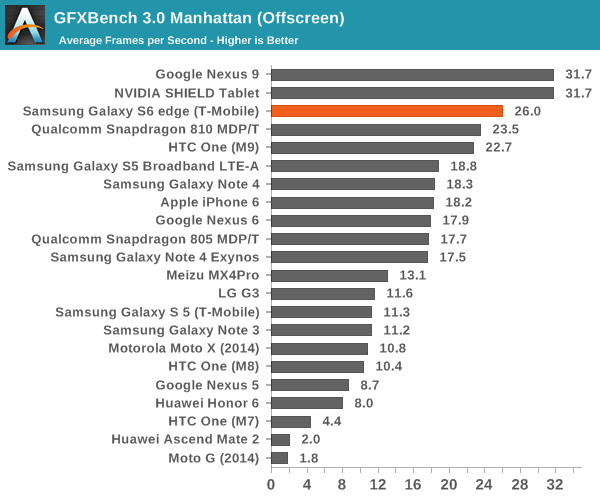
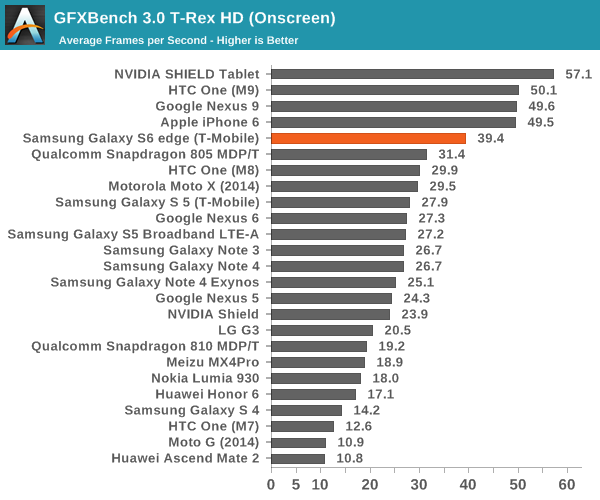
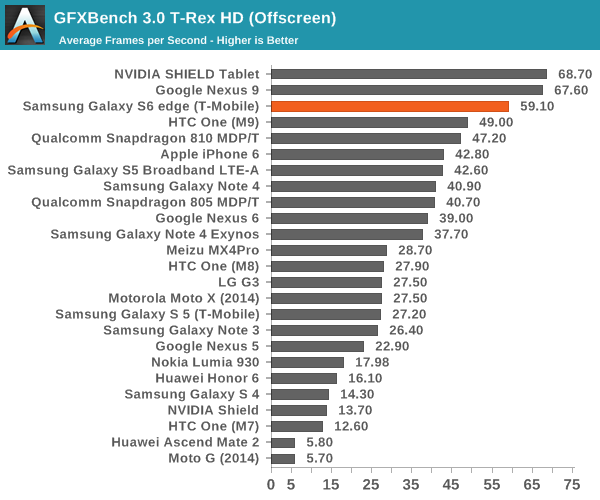
From the results the Mali T760MP8 GPU of the Exynos 7420 performs admirably in comparison to the Adreno 430 of the Snapdragon 810. We see a 10% lead over the Adreno 430 in Manhattan, growing to 20% in T-Rex. Qualcomm hinted that the Adreno 430 is more strongly improved in ALU performance over the Adreno 420, which would explain why the gap isn't as significant this generation. A 700 MHz clock on the Adreno 430 would likely equal to T760 in this case, but I suspect the power consumption of such a clock would be untenable. The Galaxy S6 does fall behind on the on-screen benchmarks due to the 1440p display compared to the 1080p display of the One M9, but rendering at a lower resolution would avoid most of these problems in real games.
Display
As previously discussed, the Galaxy S6 line introduces a newer generation of AMOLED displays, which is said to increase maximum luminance to 600 nits. Samsung claims that this was achieved with the use of new materials, which is likely necessary in order to sustain power efficiency improvements. It doesn't seem that AMOLED is uniquely suited to high resolution, but rather that Samsung Display Corp. is managing to dramatically improve how they make AMOLED displays with every year that offset power consumption increases from higher resolution displays. To find out how Samsung did, we use SpectraCal's CalMAN 5 Ultimate, in addition to X-Rite's i1Pro2 Basic to characterize displays as accurately as possible.
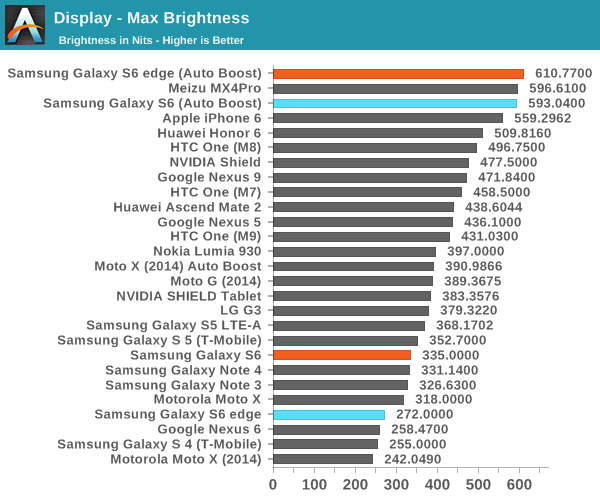
From the results Samsung's claims of a 600 nit display are valid in this case, which is a 100% APL white display. It's important to note that achieving this requires the use of auto-brightness, and that manual brightness is limited to a much lower brightness to reduce power usage, here the S6 sees similar maximum brightness as the S5. The S6 edge disappointingly only achieves 272 nits in this mode, a rather low value. I saw color balance shift dramatically in auto-boost mode, which suggests that this operating mode is likely less efficient than manual brightness. As an explanation, we've seen that colors are controlled in AMOLED by voltage while brightness is controlled by PWM (pulse width modulation). As with most recent AMOLED displays, there's no DC bias to the pixels so the contrast really is infinite instead of just a very large number when displaying black.
Galaxy S6
Galaxy S6 edge
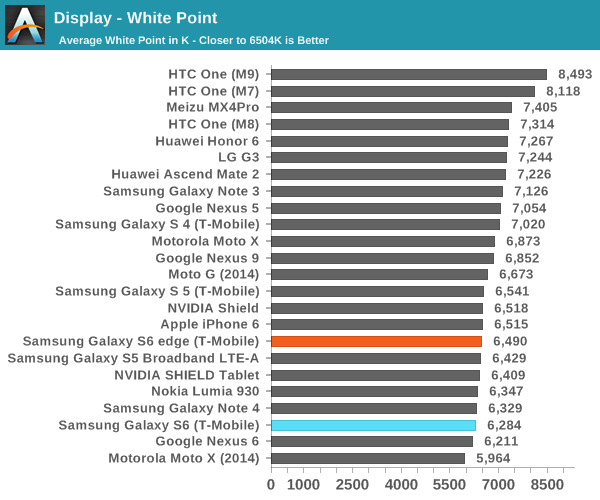
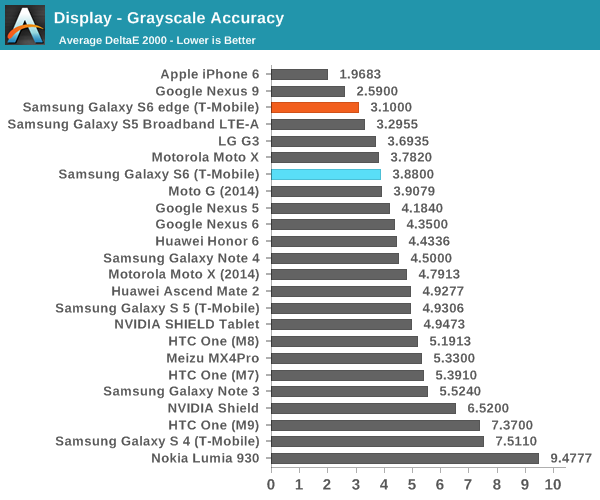
Moving on to grayscale, we can see that Samsung has done a pretty good job of controlling the white point and gamma across the saturation sweep, even if green is slightly dominant in both displays. We can also see that there is variation across displays as the S6 edge is closer to neutral while the S6 sample tends a bit warmer.
Galaxy S6
Galaxy S6 Edge
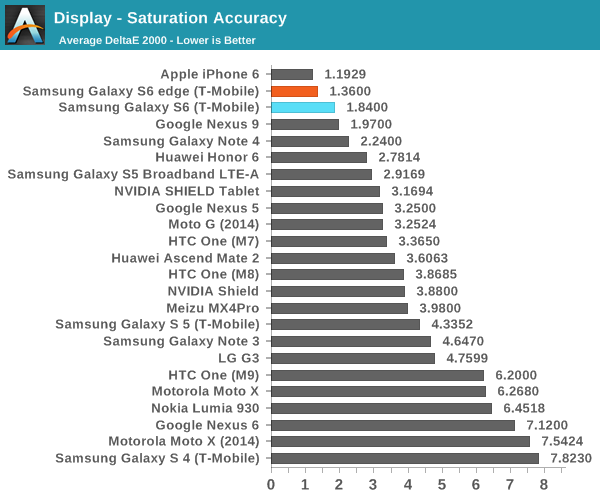
In the saturation sweep, both displays do an incredible job. I really don't have anything else to say here, because there's really no way to improve on the level of calibration Samsung has done on this display. Unless Samsung calibrates every single display in production, which is wildly impractical and effectively impossible to do, this is as good as it gets for a mass-produced device. Improving past this point will also be incredibly difficult to perceive, which means there's no real reason to go any further.
Galaxy S6
Galaxy S6 edge
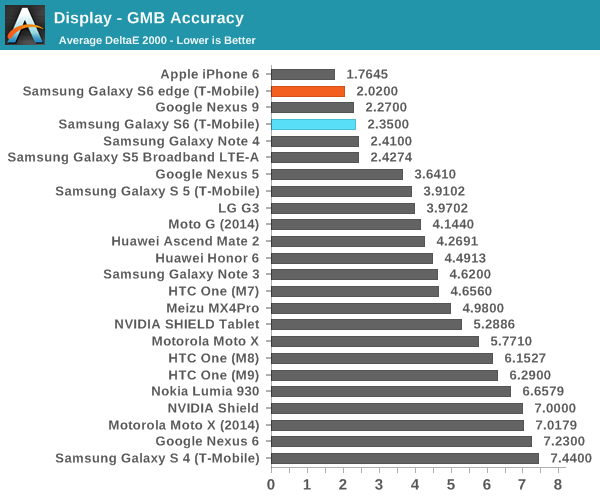
In the Gretag MacBeth ColorChecker, we can get an idea for overall color accuracy, which paints a picture similar to the saturation test. The only real problem I've noticed with these displays are the viewing angles, which can produce color shifting when the display is tilted. This is a bit of an issue on the edge variant as I can see that the edges of the display appear somewhat green when viewed head on, but otherwise there are no real issues to be seen here. Overall, this is probably the best display anyone will be able to get in a smartphone right now. This level of progress is amazing from Samsung, given just how bad things were with the Galaxy S' AMOLED display, even as recent as the display of the Galaxy S4. With the Galaxy S5 review, I said that I wouldn't be surprised to see AMOLED equal, if not exceed LCD within a year or two, and Samsung has managed to finally hit that mark.



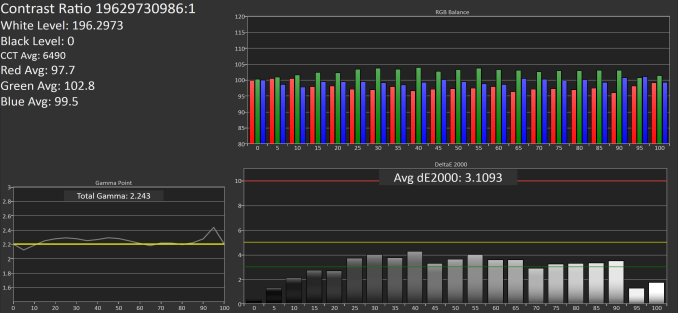
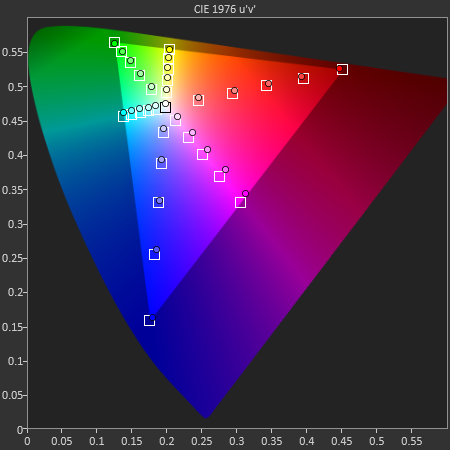
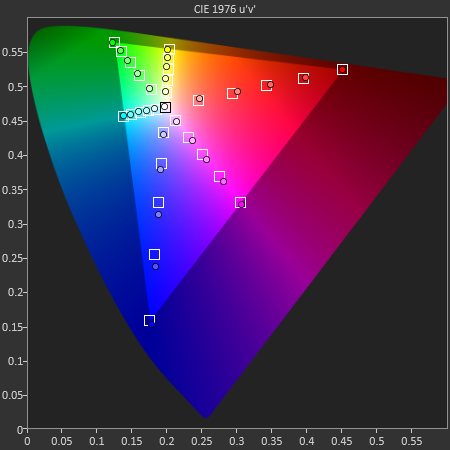
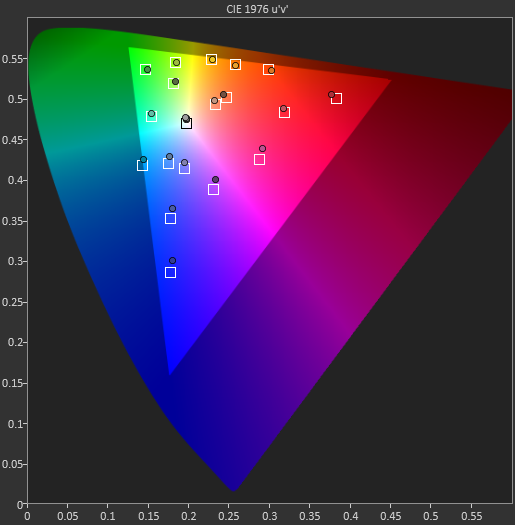









200 Comments
View All Comments
hp79 - Sunday, March 29, 2015 - link
I understand that the screen does use more CPU power, but how do you know if going with 1080p will give you 2 days battery life instead of 1? I don't think the screen resolution will make that much difference on battery life. What really makes the difference is the battery capacity (they went smaller so this is bad), and newer process (power efficiency gone up).I haven't tried a 1440p on a phone yet, but I've noticed immediately how different a 720p vs 1080p on a 4.5" screen is, while a lot of people were claiming human eye can't detect any difference. I think it's the same thing happening here. I'm pretty sure the photos will look much better on a 1440p screen compared to 1080p. I want my screen to be real life-like sharp and clear, and I think 1440p will bring that.
The 1440p screen is also needed for virtual reality application where you split the screen for left and right eye, then the resolution really matters and we might want even more higher resolution. Of course, VR will have to take off before that but still, I think VR is much easier to take off than gimmicky smart watch or the not-so-popular 3D TVs.
MercuryHero - Tuesday, April 14, 2015 - link
Their AMOLED screens are way more efficient than they used to be in terms of light output per energy used, so they're essentially offsetting their efficiency gains with a higher resolution.It's a balance that they have to maintain between actually benefiting from the improved efficiency versus offsetting against it to boost specs without losing much efficiency, and in this case I am on your side, because I don't have any reason for anything more than 1080p in Pentile, and I'd rather they balanced a little more in favour of actually giving us some battery savings rather than creeping the specs arguably beyond where they would be useful. I'd hate to look like an idiot in 4 years when everyone has 4k Ultra HD screens on their phones but I just don't see any point to going beyond about 300ppi for RGB stripe or a little higher for Pentile.
1announcer - Friday, March 27, 2015 - link
Why not just buy an IPhone? When you don't have an SD card or replaceable battery you just have an IPhone running android. I'll stick with my S5 until Samsung wakes up and gives me something to be happy about. Those cheep Chinese phones with SD cards and replaceable batteries are looking better and better.chizow - Saturday, March 28, 2015 - link
Basically, that's what I ended up doing after Samsung stripped the only 2 things I actually bought their phones for. If it comes down to Android vs. iOS experience, iOS wins, although I do prefer Google Play for the random/obscure apps you'll find there.MercuryHero - Tuesday, April 14, 2015 - link
The cheap Chinese phones typically run older versions of Android, never offer any upgrades and often there are no developers making third party ROMs either. So you may be on Android 4.3 even in 2 years' time. And what's more the firmware is a lot buggier than what you'd come to expect from HTC or Samsung, coupled with the fact few app developers will test on such devices, uncovering weird bugs in lots of apps.I speak from experience and I've gone back to high end Samsung phones, albeit I still save money by not buying the latest model. For instance I have a Galaxy Note II that's almost 3 years old and it has Kitkat and works better than modern mid-range phones even things like the Galaxy S5 mini.
Apple is very good at keeping software updated on their phones too, traditionally even better than Samsung's flagship phones. There are other reasons people may prefer Android over Apple than removable storage or batteries though.
Mrduder11 - Saturday, March 28, 2015 - link
I don't meant to start an Apple vs Samsung war but seriously for a premium handset that comes out 6 months later then the iPhone 6 I feel like these results are very overwhelming. Overall performance is underwhelming compared to the iPhone 6. I understand benchmarks don't tell the whole story but I am surprised to see lower performance from the S6. Also why has the iPhone 6 Plus results been removed from the performance and display charts?halcyonmax - Saturday, March 28, 2015 - link
How so? In CPU performance S6 more or less comes at the top.Where it seems to be lacking is the GPU department but thats basically because of the insane resolution.Still in the off-screen tests the GPU has good scores.The browser based CPU benchmarks do seem to paint another picture but such benchmarks are greatly affected by the browser optimization.Check out the htc m9 review..there anandtech has listed the stock browser scores of s6 and they seem to be pretty impressive.Other than these the missing sd slot and battery seem to be the let down. IF phonearena's battery tests are to be believed s6 is far better than the iphone in the battery department and gives similar performance as its predecessor despite the smaller battery..however it has faster charging speed.MercuryHero - Tuesday, April 14, 2015 - link
You cannot meaningfully compare performance between two completely different platforms with a software benchmark; they are measuring different things on the different platforms because everything - right down to low level instructions - that the respective benchmark apps do is different.I can understand how easy it is to infer equivalency when they are shown in the same chart like that; I'd disagree with the practice of combining them into a single chart.
Ahnilated - Saturday, March 28, 2015 - link
Well I was all excited to get the new S6 Edge until I read that you couldn't remove the battery and it didn't have removable storage. That makes it a no go for me period.AnnonymousCoward - Monday, March 30, 2015 - link
Your sentence already ended with a period. There's no point in saying that word.